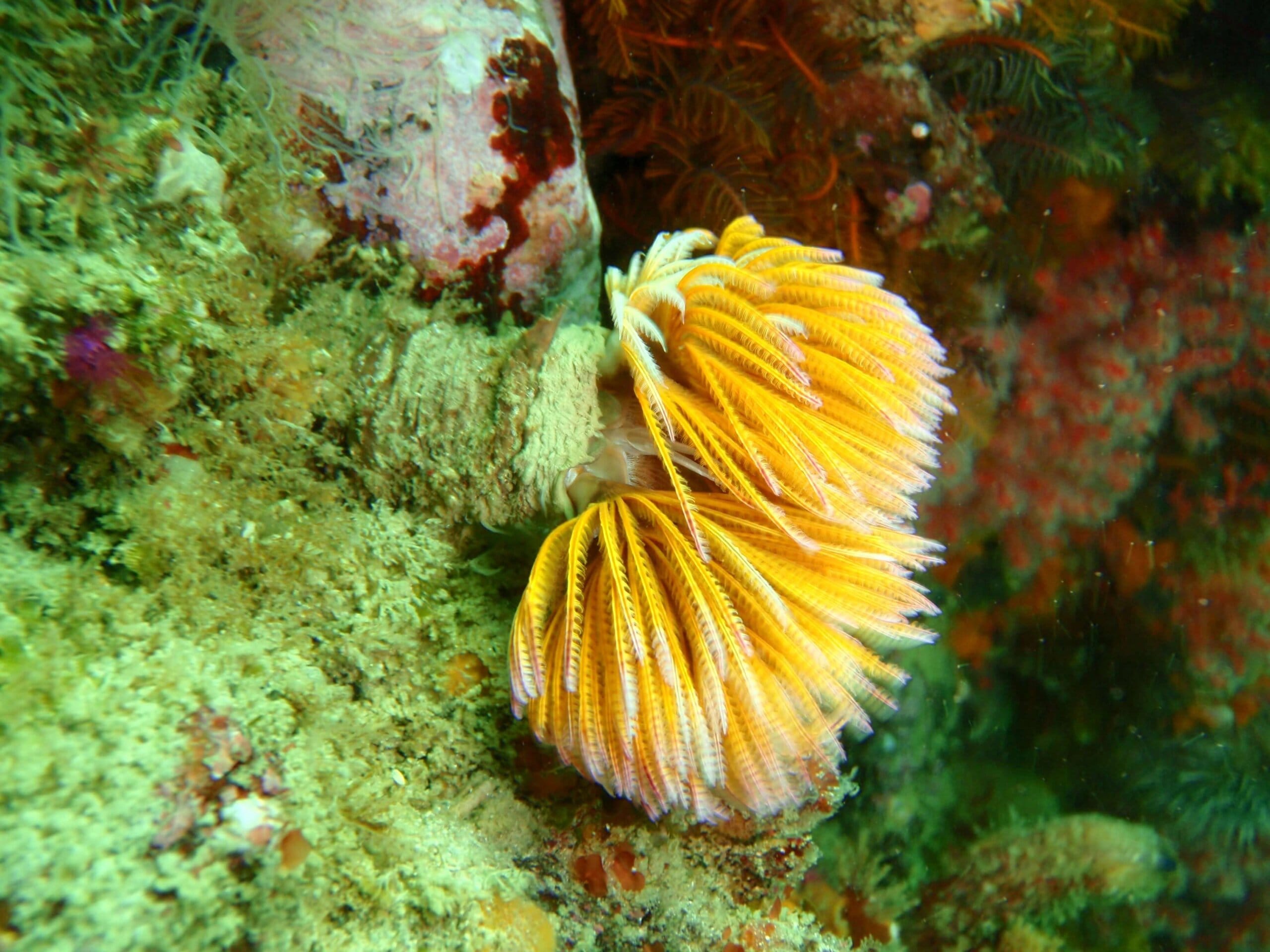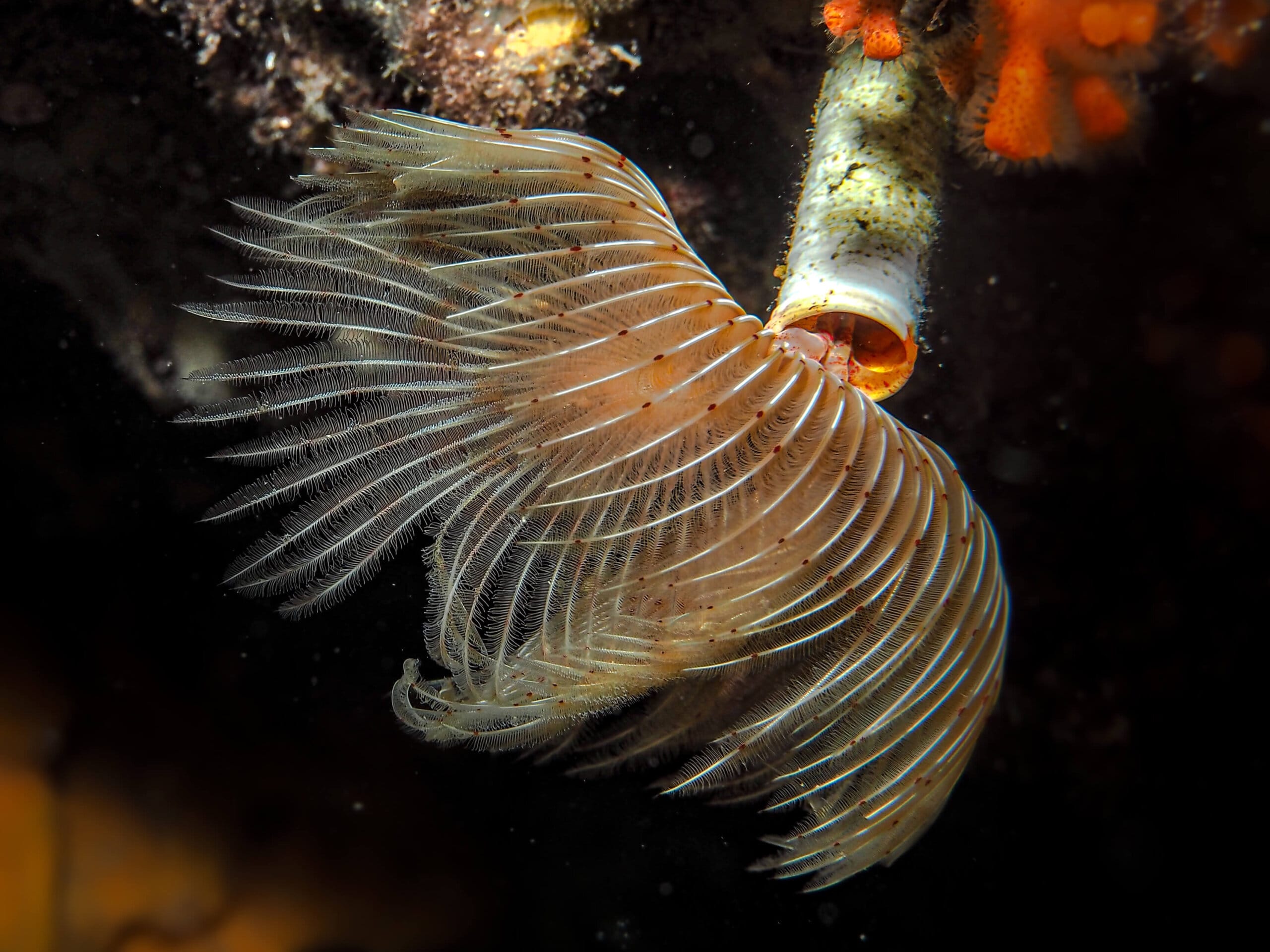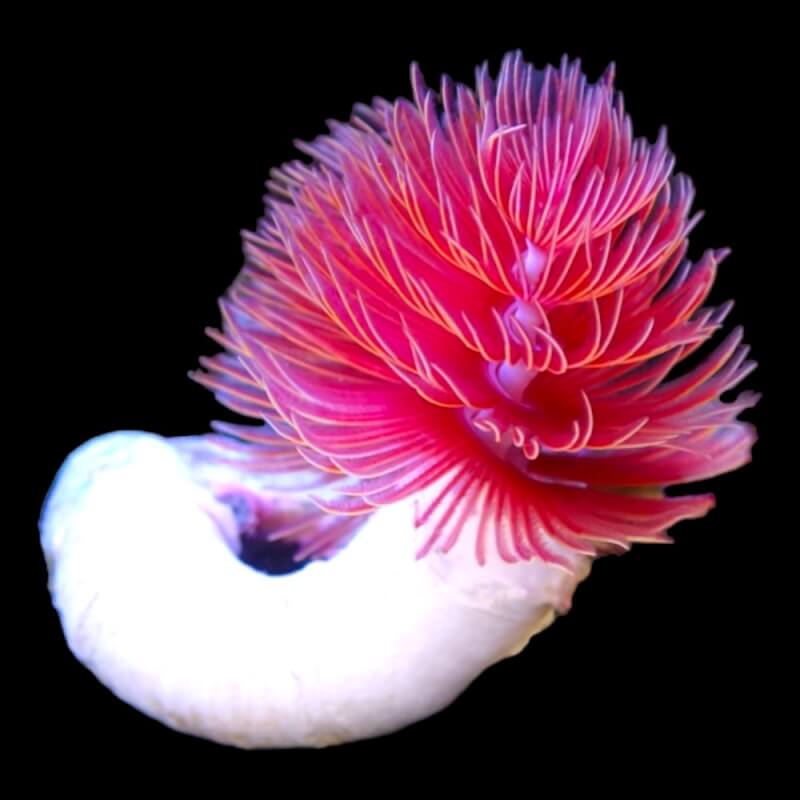Adding Feather Dusters and Fan Worms To Your Underwater Reef Paradise
Reef aquariums are not just about colourful corals and vibrant fish; they also house a variety of invertebrates that contribute to the overall health and aesthetic of the tank. Among these invertebrates, feather dusters and fan worms stand out for their delicate beauty and essential ecological roles. This comprehensive guide will explore the various types of feather dusters and fan worms, their natural habitats, and how to successfully maintain them in a reef aquarium.
What Are Feather Dusters and Fan Worms?
Feather dusters and fan worms belong to the class Polychaeta within the phylum Annelida. These segmented worms are known for their spectacular, feathery tentacles that they extend from their tubes to filter feed. The tentacles, often called radioles, capture plankton and other small particles from the water, providing both nutrition for the worm and a beautiful display for the aquarist.

Feather Dusters
(Family Sabellidae)
• Feather dusters are tube-dwelling worms that build their tubes from sand, mud, or secreted materials. Their radioles form a crown that is typically circular or semi-circular, resembling a feather duster.

Fan Worms
(Family Serpulidae)
• Fan worms, like feather dusters, are also tube-dwellers but their tubes are often calcareous (made from calcium carbonate). Their radioles form more intricate patterns, and some species can even have bioluminescent features.

Why Keep Feather Dusters and Fan Worms in a Reef Aquarium?
Feather dusters and fan worms make an excellent addition to a reef aquarium for several reasons:
1. Aesthetic Appeal: Their colourful and delicate plumes add a touch of elegance and natural beauty to any tank.
2. Behavioural Interest: Watching them extend and retract their radioles can be mesmerising, providing constant activity and movement.
3. Ecological Benefit: As filter feeders, they help maintain water quality by removing suspended particles from the water column.
Setting Up the Ideal Environment
Creating a suitable environment for feather dusters and fan worms is crucial for their health and longevity in a reef aquarium. Here are key considerations:
Tank Size and Setup
• Tank Size: While these worms do not require large tanks, a minimum of 20 gallons is recommended to provide adequate space and stable water conditions.
• Live Rock and Substrate: Include plenty of live rock and a mixed substrate of sand and rubble. The live rock offers surfaces for tube attachment and hiding spots, while the substrate can provide building materials for their tubes.
Water Parameters
• Temperature: Maintain a stable temperature between 72-78°F.
• Salinity: Keep salinity levels between 1.023 and 1.025 specific gravity.
• pH: Ensure the pH is between 8.1 and 8.4.
• Nitrates and Phosphates: Regularly monitor and keep nitrates and phosphates at low levels to ensure water quality remains optimal.
Lighting
• Moderate lighting is usually sufficient for feather dusters and fan worms. While they do not require intense light, proper lighting is essential for the health of any photosynthetic organisms in the tank.
Water Movement
• Gentle to moderate water flow is ideal. It should be strong enough to keep food particles suspended in the water column but not so strong that it dislodges the worms from their tubes or causes stress.
Feeding Feather Dusters and Fan Worms
Feather dusters and fan worms are suspension feeders, relying on plankton and other small organic particles in the water for sustenance. In a reef aquarium, their diet can be supplemented with:
• Phytoplankton: Commercially available liquid phytoplankton can be added to the tank to provide a steady food source.
• Marine Snow: A mixture of tiny organic particles and microorganisms, marine snow is another excellent food source.
• Fine Particulate Foods: Specialised invertebrate foods designed for filter feeders can also be used.
Regularly feed the tank with these supplements to ensure that the feather dusters and fan worms receive adequate nutrition.
Compatibility with Other Tank Inhabitants
When introducing feather dusters and fan worms to a reef tank, consider their compatibility with other tank inhabitants:
Fish
• Safe Choices: Many reef-safe fish, such as clownfish, gobies, and tangs, generally ignore feather dusters and fan worms, making them excellent tank mates.
• Potential Issues: Avoid fish species that may nip at the worms’ tentacles, such as certain butterflyfish and angelfish.
Corals and Invertebrates
• Corals: Feather dusters and fan worms coexist well with most corals. Their presence does not harm corals and can add to the tank’s biodiversity.
• Other Invertebrates: They can coexist with various invertebrates, such as snails, shrimp, and non-aggressive crabs. Monitor interactions to ensure peaceful coexistence.
Different Types of Feather Dusters and Fan Worms for Reef Aquariums
There are several species of feather dusters and fan worms that are popular among reef aquarists due to their striking appearance and relatively easy care requirements. Here are some notable types:
Common Feather Duster
(Sabellastarte spp.)
• Appearance: Large, colourful crowns that range from white and brown to purple and pink.
• Habitat: Prefers sandy or muddy substrates with moderate water flow.
• Care: Relatively hardy, making them suitable for beginners.

Dwarf Feather Duster
(Bispira spp.)
• Appearance: Smaller than common feather dusters, with delicate, often brightly coloured radioles.
• Habitat: Typically found in clusters on live rock or coral rubble.
• Care: Requires gentle water flow and regular feeding with fine particulate foods.

Coco Worm
(Protula magnifica)
• Appearance: Vibrant, spiraled plumes and a calcareous tube.
• Habitat: Found attached to rocks and other hard substrates.
• Care: Slightly more demanding, requiring stable water parameters and a consistent food supply.

Christmas Tree Worm
(Spirobranchus giganteus)
• Appearance: Named for their tree-like crowns, which come in a variety of bright colours.
• Habitat: Bore into coral heads, particularly Porites corals.
• Care: Requires well-established tanks with healthy corals, as they depend on their host coral for survival.

Behavioural and Ecological Observations
Feather dusters and fan worms exhibit a range of fascinating behaviours that can be observed in a reef tank setting. These behaviours include:
Filter Feeding
• They extend their radioles into the water column to capture plankton and other small particles. Watching them feed is a captivating sight, as their tentacles rhythmically move with the water flow.
Tentacle Retraction
• When disturbed, these worms quickly retract their radioles into their tubes for protection. This rapid response can be a useful indicator of tank disturbances or water quality issues.
Tube Building
• Feather dusters and fan worms continuously build and maintain their tubes, using materials from the substrate or secreting them. Observing this behaviour provides insight into their adaptability and survival strategies.
Challenges and Considerations
Keeping feather dusters and fan worms in a reef tank comes with challenges and considerations:
Sensitivity to Water Quality
• Water Quality: These worms are sensitive to changes in water quality. Poor water conditions can cause stress and lead to the deterioration of their health. Regular water changes and monitoring are essential.
Predation and Damage
• Predation: Ensure that no aggressive fish or invertebrates are present that may harm or prey on the worms.
• Physical Damage: Handle the worms and their tubes with care to avoid damage during tank maintenance.
Feeding Requirements
• Consistent Feeding: Providing a steady supply of plankton and other food sources is critical for the health of these filter feeders. Regular feeding with appropriate supplements is necessary to maintain their nutritional needs.
Each species has unique requirements and behaviours, so research and choose one that best fits your tank’s conditions and your level of experience.
Conclusion
Feather dusters and fan worms are captivating additions to any reef aquarium, offering both aesthetic appeal and fascinating behaviours. By understanding their natural habitat and providing a suitable environment, aquarists can enjoy the dynamic presence of these elegant filter feeders.
Ensuring proper tank setup, compatible tank mates, and adequate nutrition will help these worms thrive, adding an intriguing element to the underwater landscape of a reef tank. Whether you’re a seasoned aquarist or new to the hobby, feather dusters and fan worms can bring a touch of the wild, natural world into your home aquarium, offering endless opportunities for observation and appreciation.

